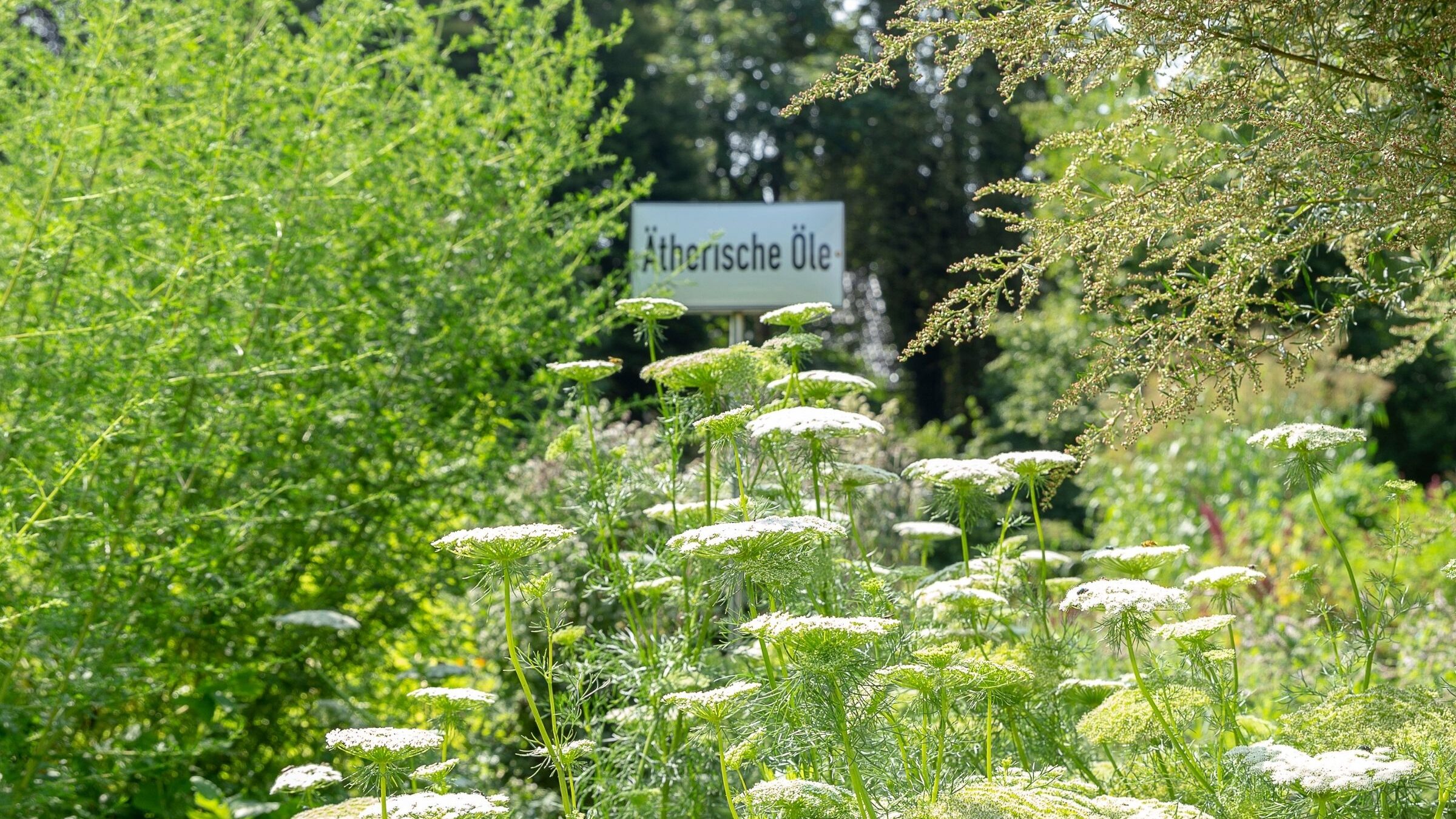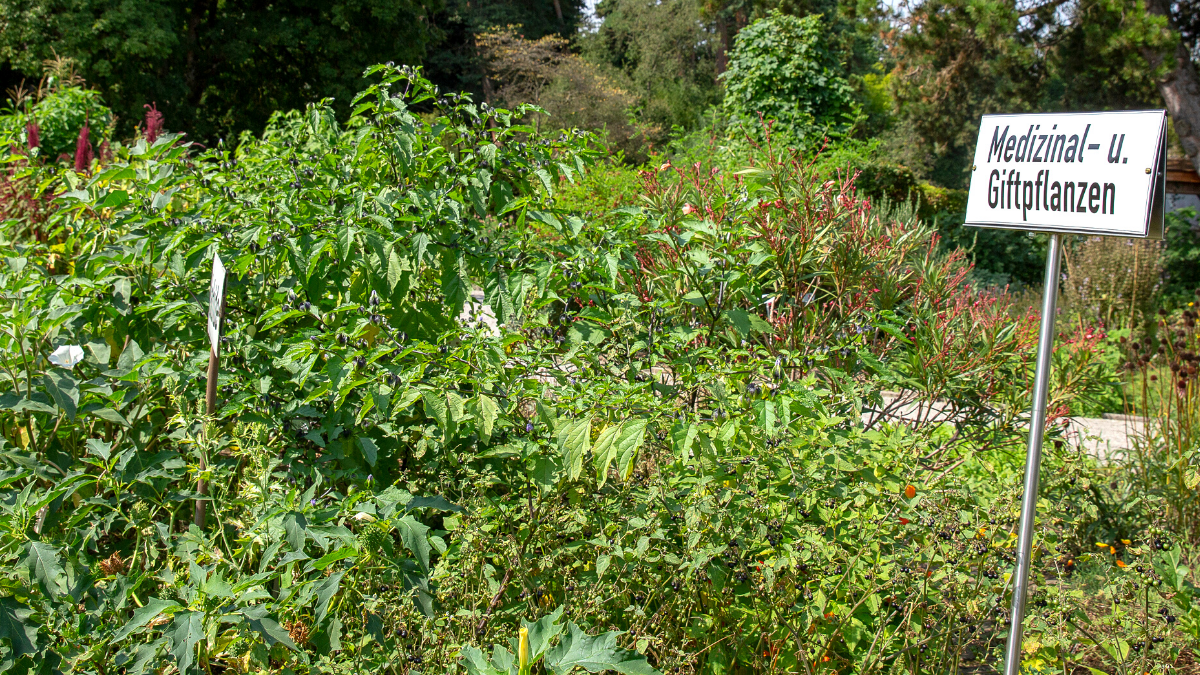Useful plants
From the rose garden, on the left hand side towards the east, one comes to another small garden of historical design: the useful plant garden. It offers a rich selection of plants that are “used” by people in the broadest sense and can thrive in our climate outside a greenhouse.
The formal garden goes back to much older sources than the formal gardens of the Italian or French residences. In the “Hortus Medicus,” the medicine garden, medical monks grew plant treasures. Usually around a central watering hole, in concentric circles and horizontal lines. Although the central watering hole is missing in Munich’s kitchen garden, there is a strong resemblance to monastery gardens. An important difference is that the offer goes far beyond medicinal plants and some aromatic herbs: fiber plants, dye plants, plants for technical raw materials, fodder plants, but also plants that have only recently been used, are found in a rich selection in a small space.
Useful and medicinal plants
In the formal shape of an old herb garden, the planting is very symmetrical. Numerous varieties of many cultivated plants and also many more exotic useful plants are arranged here in a very small space according to their use. Old, but today again interesting varieties of cereals have their own area here. In July, beds are filled with lushly growing cucumber and pumpkin plants, while the asparagus has already shot up. The scents of a wide variety of spices waft into the central plaza, which is enclosed by hornbeam hedges and has benches inviting visitors to sit. Many useful plants have been given explanatory panels that provide information about their origin, culture and benefits, and also give insight into the breeding objectives.
Cultivated plants of the genus Brassica
All cabbage species belong to the genus Brassica, which occurs from Europe to Central Asia. Beds in the crop area show cultivated forms of the species Brassica oleracea, which was originally common on the coasts of Spain, France and England, but is now cultivated worldwide. In addition to the varieties shown here, Brassica oleracea also includes broccoli, romanesco, white cabbage, red cabbage, savoy cabbage, kohlrabi and palm kale.



